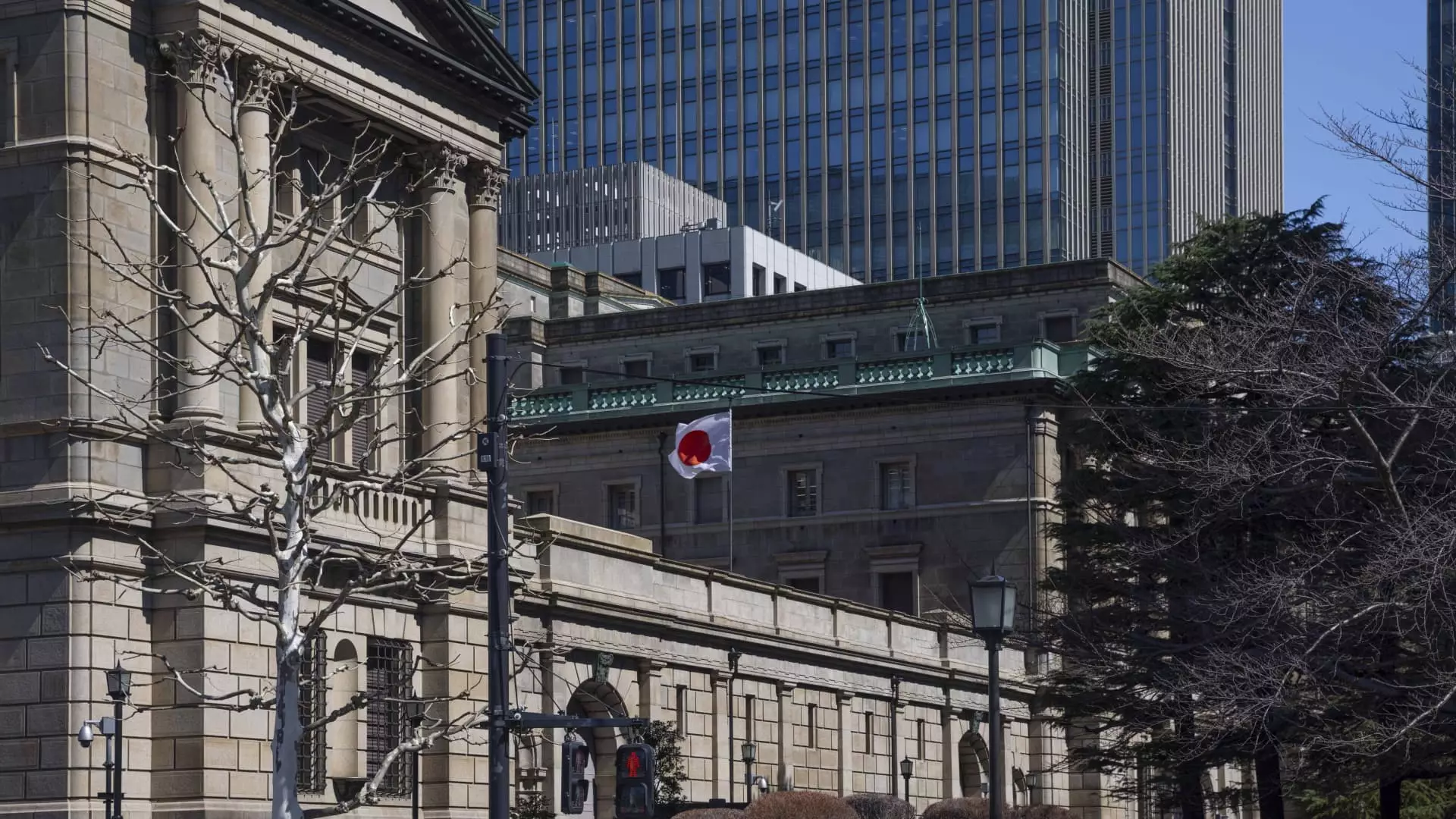In the realm of global economics, few currencies wield the influence of the Japanese yen. However, today’s financial landscape signals an era of uncertainty for this once-stalwart currency. Japan is grappling with the ramifications of a weakening yen, a scenario that has exacerbated inflationary pressures and significantly impacted the everyday lives of Japanese citizens. Rather than adopting proactive measures to restore strength, politicians are bouncing between denial and cautious optimism, leaving citizens wondering if their leaders comprehend the gravity of the situation.
It’s imperative to recognize that the yen’s depreciation is not merely a financial hiccup; it is a symptom of deeper economic malaise. The drift towards a weaker currency, while politically convenient for an export-driven economy, results in skyrocketing prices for essential goods, widening the gap between the affluent and the working class. At the core of this currency dilemma lies the need to bolster Japan’s industrial competitiveness. Without a robust economy, the yen will remain tethered to stagnation, leaving families to bear the brunt of surging living costs.
Trade Negotiations: A Tautrope of Tensions
As Japan prepares to enter trade negotiations with the United States, the stakes couldn’t be higher. The presiding sentiment within the ranks of the ruling Liberal Democratic Party (LDP) reflects a reluctant understanding: the weak yen has become a barrier to fiscal stability. Itsunori Onodera, the LDP’s Policy Research Council chair, recently indicated that targeting a stronger yen hinges on empowering domestic industries. However, this articulated vision raises questions about the sincerity of policymakers and their willingness to challenge the long-established bank policies that have stunted growth.
Within these high-stakes discussions, Onodera’s rejection of using Japan’s substantial U.S. Treasury holdings as a bargaining chip against tariffs imposed by President Trump surfaces a critical point of contention. While it’s admirable to maintain allyship with the U.S., it seems naive to entirely dismiss the leverage that such financial assets present in an increasingly aggressive trade environment. Debating the sanctity of these holdings comes across as an unwillingness to engage with the realities of economic warfare, wherein countries utilize their resources as instruments of negotiation.
Inflation: A Hidden Foe
Moreover, the notion that a weaker yen is merely a point of discussion or debate within boardrooms obscures a harsher truth: inflation is no longer a distant threat but an active assailant on the budgets of ordinary Japanese families. The soaring prices of goods can be traced directly back to the yen’s depreciation, leading to a wave of frustration among consumers who find their purchasing power diminished at every turn. In this context, the euphemistic rhetoric from policymakers feels hollow. A proactive response from the government is essential; a mere acknowledgment of the issue without subsequent action will lead Japan straight into an economic quagmire.
This is where the Bank of Japan’s ultra-loose monetary policy becomes critically examined. The reluctance to shift from these entrenched strategies does more than prolong the economic malaise; it threatens to exacerbate systemic fractures in society. Japanese consumers deserve policies that explicitly confront inflation rather than gloss over its ramifications. As interest rates remain at historic lows, the gap widens between different sectors of the population—those who profit from cheap money and those who suffer its consequences become more evident.
The Future: Turning Currency into Competitiveness
Japan faces a pivotal moment. On one hand, the allure of weakening the yen plays into the hands of exporters. Still, this must come at the cost of consumer hardship and economic instability. Sustainable growth can only occur with a dual focus: enabling competitiveness within Japan’s industries while holding firm against the fluctuations that an unstable currency creates in global markets.
Thus, the question arises: how can Japan nurture its economy in a manner that both stabilizes the yen and spurs growth? It requires genuine investment in technological advancements, infrastructure, and perhaps most critically, labor reforms that align market demands with workforce preparation. The time for complacency has long passed; Japan must act decisively, lest the yen’s fluctuation spiral into a formidable threat against the economic fabric of the nation.

